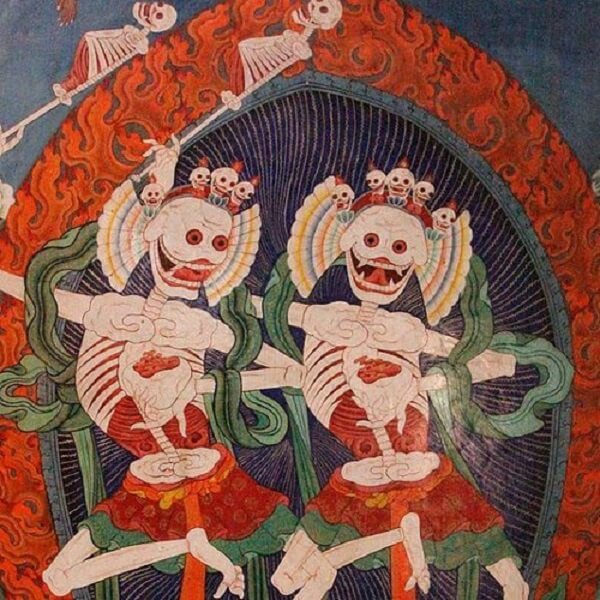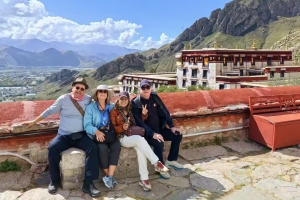The Tibetan Book of the Dead, also known as the Bardo Treasures, is an important spiritual text discovered in the 14th century. It is seen as a hidden treasure and contains teachings connected to Padmasambhava, a legendary monk from the 8th century. This book guides readers through the process after a person dies, offering insights into what happens during a period known as the “bardo.”

Bardo Thodol
This text serves as a comforting speech intended to be read in the presence of those who are dying or have passed away. Its purpose is to provide support during these difficult moments, offering reassurance and a sense of being cared for. The main focus is on the person who has died. The Bardo Thodol is a guide about the various stages we go through between death and rebirth. It highlights the importance of seeing through false beliefs and distractions that keep us stuck in cycles of suffering and rebirth. The ultimate goal is to help people move toward a clearer and more enlightened state of being.
A key idea in many Buddhist teachings is that becoming attached to and craving material things can lead to suffering and discomfort, a concept known as dukkha. This suffering affects how people act, and the consequences of these actions, called karma, tie individuals to a continuous cycle of life, death, and rebirth, known as samsara. The ultimate goal is to reach enlightenment, or bodhi, which means being free from this cycle, a state referred to as moksha.

Spirits of Dead
For those who do not reach enlightenment, karma still plays a significant role in their lives, guiding them into one of six possible forms of existence. These include being a person in hell, experiencing intense suffering; being a wandering ghost, always craving more; being an animal, driven by basic instincts; being a demigod, focused on gaining power; being a human, where there is a mix of instinct and reason; or being a god, who might be misled into thinking they are immortal because of their long life.
This bardo stage, a term that translates to ‘intermediate state’ or ‘in-between state,’ is believed to last up to 49 days, during which a person’s spirit is thought to transition to its next life. The text is linked to the Nyingma school of Tibetan Buddhism. It includes various teachings that blend ideas from both Buddhism and the older Bon religion, a traditional belief system in Tibet. Some of these concepts may differ from what is typically found in standard Buddhist texts. The Tibetan Book of the Dead is a spiritual map guiding individuals through death and rebirth, with the ‘Bardo’ being a crucial and weighty part of this journey, carrying a significance that has been held in high regard for over a thousand years.
When someone passes away, it’s believed that their awareness takes the form of 100 different deities, which include 42 peaceful ones and 58 that can be fiercer. These deities are not literal beings but symbolic representations of different aspects of the individual’s consciousness. According to the teachings of Padmasambhava, if the individual can recognize any of these 100 deities during the transitional state after death, known as the bardo period, they have a chance to connect with the divine beings and find liberation. This recognition holds the transformative power to guide the soul toward a hopeful and inspired future.

52 Fierce Deities
If the right approach is taken, the journey of freeing the soul from the repeating cycle of birth and rebirth can happen. Because of this, the idea of Bardo, which relates to finding salvation, is not just important but carries a weight of significance that has been held in high regard for over a thousand years.
The Bardo Thodol is often believed to have been written by Padmasambhava, an Indian spiritual teacher who played a key role in bringing Buddhism to Tibet in the 7th century. However, most experts think the text was written in the 14th century. Since the early 1900s, it has been translated into English and other languages, with the first English version done by Walter Evans-Wentz in 1927. He named it “The Tibetan Book of the Dead,” drawing a comparison to the Egyptian Book of the Dead, as both discuss a person’s journey after death before being reborn. The famous psychologist Carl Jung also viewed this text as important for understanding the connection between psychology and spirituality.

Deities in Tibetan Culture
This book discusses the important topics of death and dying—subjects that more people are interested in today. It aims to help readers grasp the idea of death and find ways to live a good life while considering the reality of mortality.










